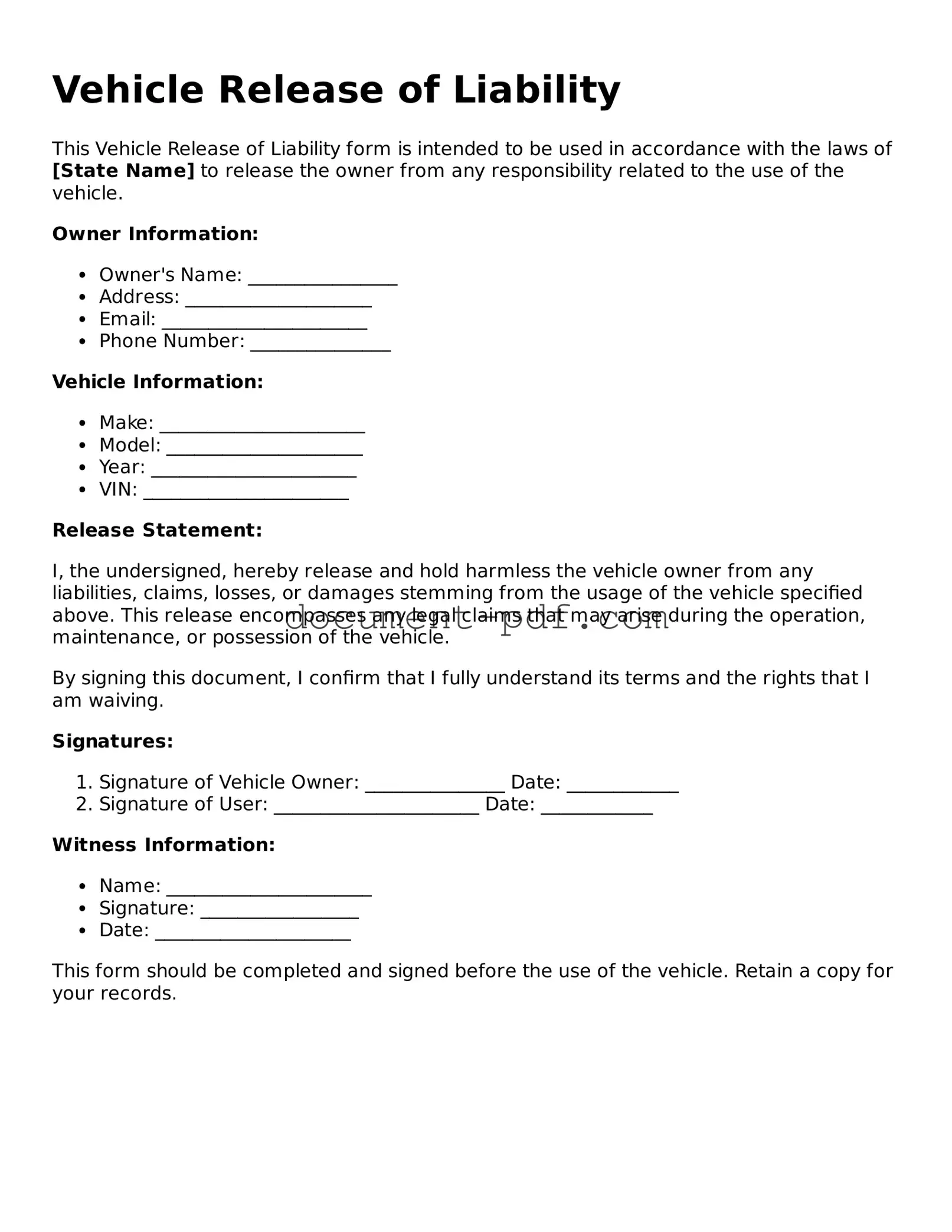Vehicle Release of Liability
This Vehicle Release of Liability form is intended to be used in accordance with the laws of [State Name] to release the owner from any responsibility related to the use of the vehicle.
Owner Information:
- Owner's Name: ________________
- Address: ____________________
- Email: ______________________
- Phone Number: _______________
Vehicle Information:
- Make: ______________________
- Model: _____________________
- Year: ______________________
- VIN: ______________________
Release Statement:
I, the undersigned, hereby release and hold harmless the vehicle owner from any liabilities, claims, losses, or damages stemming from the usage of the vehicle specified above. This release encompasses any legal claims that may arise during the operation, maintenance, or possession of the vehicle.
By signing this document, I confirm that I fully understand its terms and the rights that I am waiving.
Signatures:
- Signature of Vehicle Owner: _______________ Date: ____________
- Signature of User: ______________________ Date: ____________
Witness Information:
- Name: ______________________
- Signature: _________________
- Date: _____________________
This form should be completed and signed before the use of the vehicle. Retain a copy for your records.
